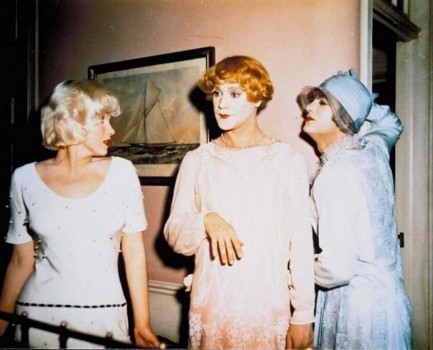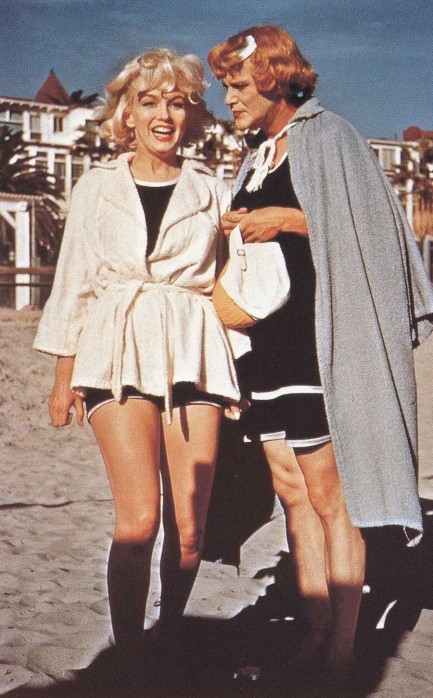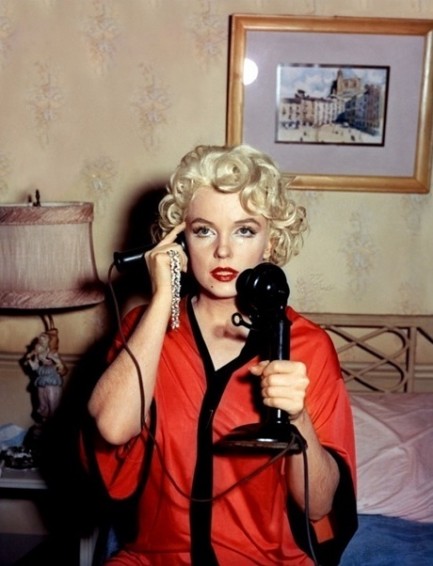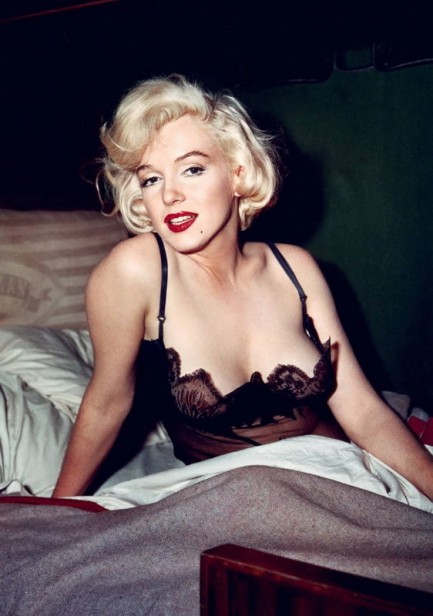| Hollywoodland | Mar 19 2017 |

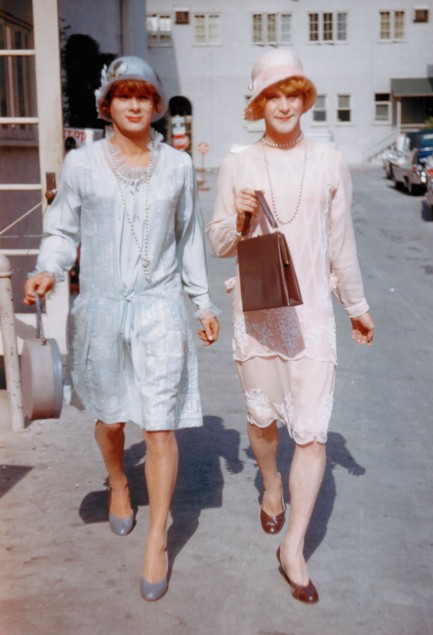
Above, a sound stage photo of Tony Curtis and Jack Lemmon in costume for their roles in Some Like It Hot, in which they starred with Marilyn Monroe. The movie premiered today in 1959 in Memphis, Tennessee, for some reason, then hit Chicago, Washington, D.C., and New York City later in the month.
| Femmes Fatales | Jan 23 2017 |

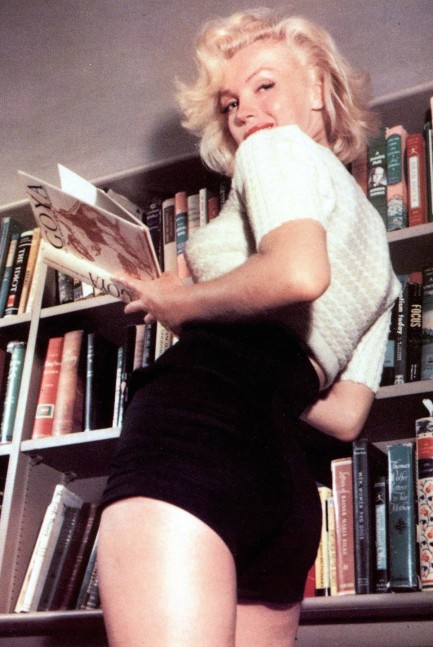
It's difficult to find a photo of Marilyn Monroe that stands apart. So many were made, and of course she looked good in all of them. But this unusual shot of her checking out a book on Spanish artist Francisco Goya shows the most photographed person of her era in an interesting and slightly different way. It's from 1953.
| Vintage Pulp | Sep 9 2016 |

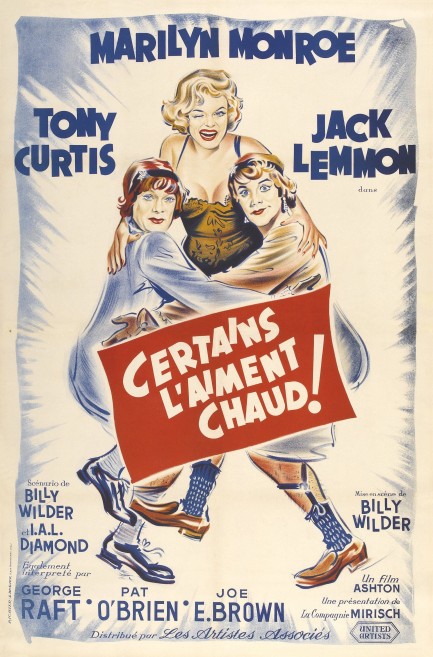
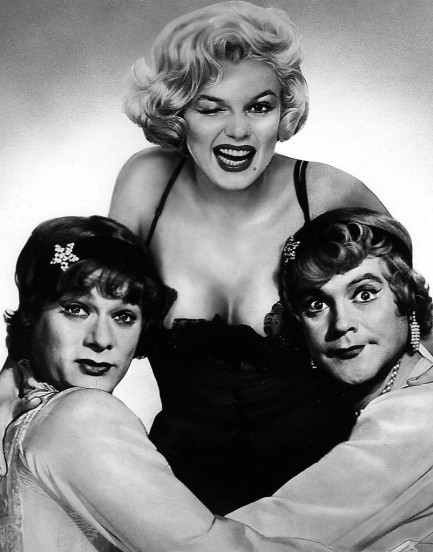 On this promo poster for the Marilyn Monroe comedy Certains l'aiment chaud, aka Some Like It Hot, it looks like Russian illustrator Boris Grinsson went a little strong on Monroe's wink, making her look like she got a splinter of glass in her eye, but Monroe actually looked that way in the promo photo used as the basis of the art, which you can see at right.
On this promo poster for the Marilyn Monroe comedy Certains l'aiment chaud, aka Some Like It Hot, it looks like Russian illustrator Boris Grinsson went a little strong on Monroe's wink, making her look like she got a splinter of glass in her eye, but Monroe actually looked that way in the promo photo used as the basis of the art, which you can see at right.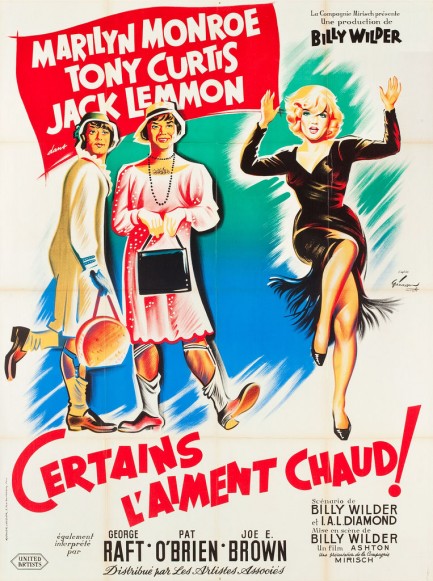
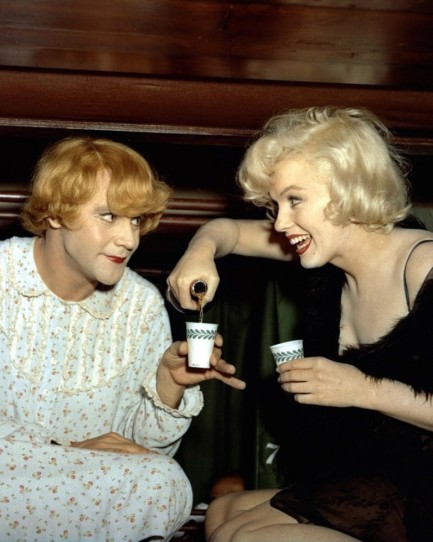
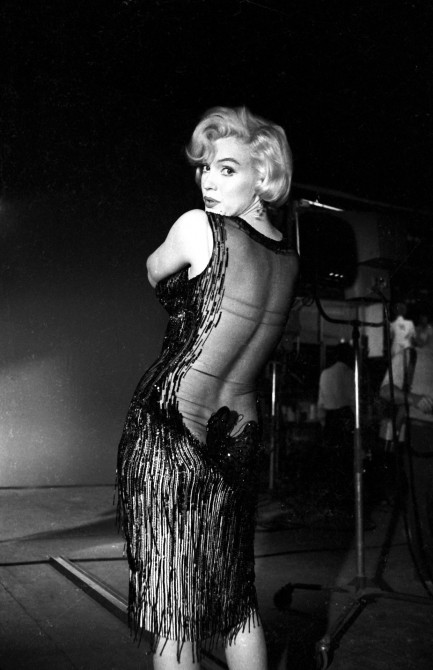
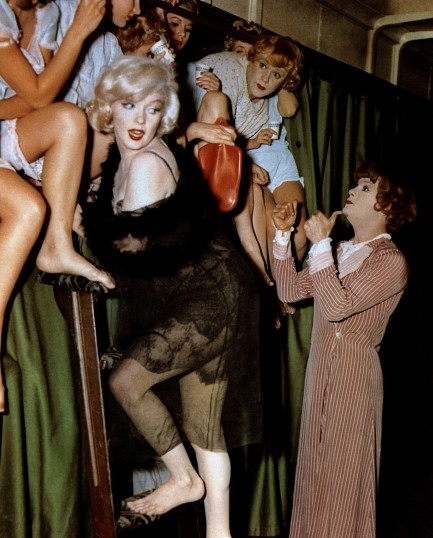
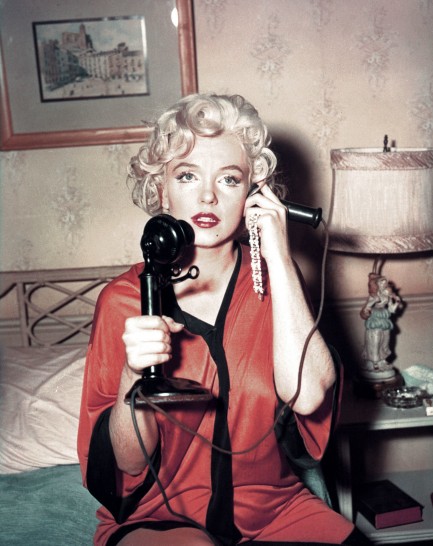
| Hollywoodland | Sep 30 2010 |

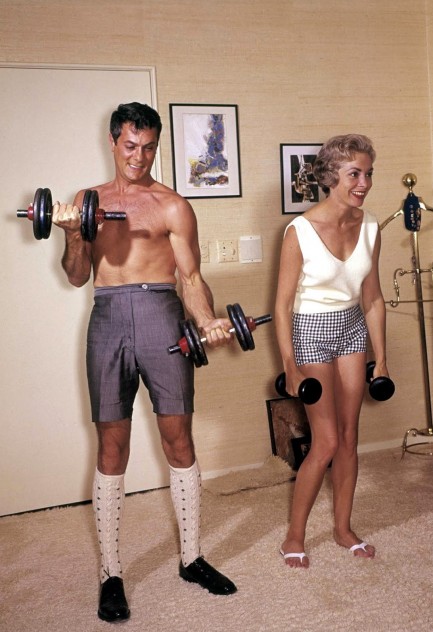
Promo shot of gifted comic actor Tony Curtis, née Bernard Schwartz, who appeared in such cinema classics Some Like It Hot, The Sweet Smell of Success and Spartacus, seen here joking around with wife Janet Leigh, circa 1960. Tony Curtis died yesterday at age 85.
| Vintage Pulp | Sep 17 2009 |

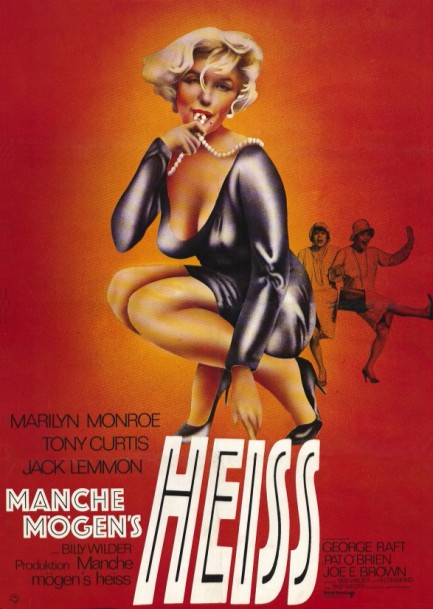
It had a classic premise: two Jazz Age musicians witness the 1929 St. Valentine’s Day Massacre and have to flee Chicago before the Mafia massacres them too. They disguise themselves as women and hide as members of an all-female musical troupe. One of the men, played by Tony Curtis, falls in love with fellow musician Marilyn Monroe but can’t reveal his gender; the other man, played by Jack Lemmon, is pursued by a rich and persistent suitor who thinks he’s found the woman of his dreams. It was called Some Like It Hot, and it was the type of absurd adventure only a confident veteran like Billy Wilder could have directed. He used all of his experience to coax top-notch acting out of a troubled Marilyn Monroe, who needed twenty to thirty takes to get some of the scenes right. In the end you’d hardly notice—her performance as Sugar Kane Kowalczyk looks effortless, as does those of Curtis and Lemmon as the two bickering buddies running for their lives. The final result was an award-winning comedy that even fifty years later has the power to deliver out-loud laughs. Above you see the film’s German promo art, which in our humble opinion is a masterwork in its own right. Some Like It Hot premiered in West Berlin today in 1959.